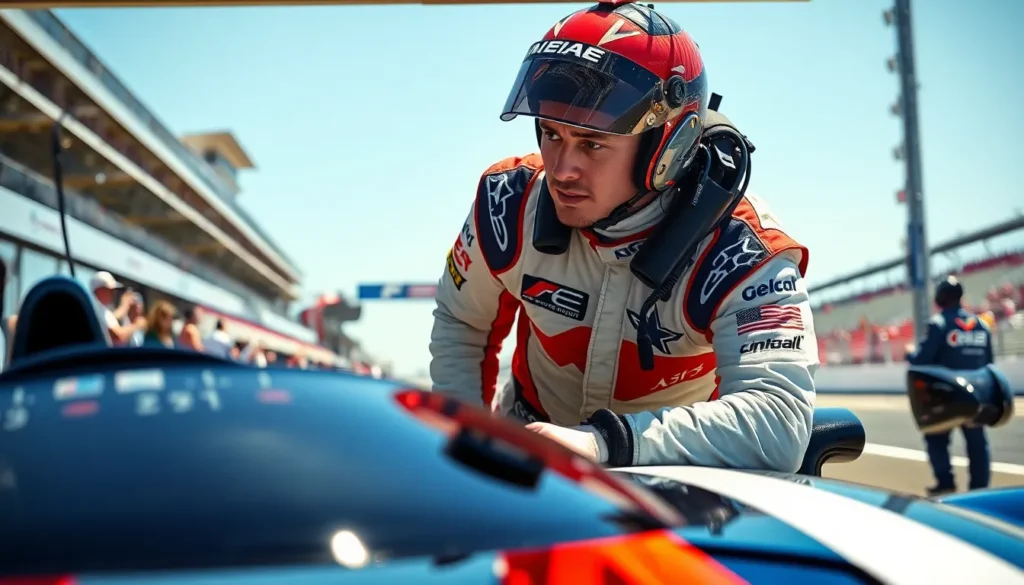Circuit endurance races are where speed meets stamina in a thrilling showdown that leaves both drivers and fans breathless. Picture this: a racetrack buzzing with adrenaline, cars zipping by like caffeinated cheetahs, and the smell of burning rubber filling the air. It’s not just about who crosses the finish line first; it’s a test of strategy, teamwork, and sheer willpower.
In these races, endurance reigns supreme. Drivers push their limits, battling fatigue while navigating hairpin turns and straightaways at breakneck speeds. It’s a spectacle that combines precision engineering with human grit, making it a must-watch for any motorsport enthusiast. So buckle up and get ready to dive into the world of circuit endurance racing, where every lap tells a story and every pit stop could make or break the race.
Overview of Circuit Endurance Races
Circuit endurance races showcase the ultimate test of speed and stamina. These events typically cover multiple hours, often extending to 24 hours or more. Teams of drivers compete to complete as many laps as possible, highlighting both individual talent and collaborative strategies. Speed becomes essential, but endurance plays a crucial role over extended periods.
Strategic planning influences every aspect of these races. Teams must determine when to pit for fuel, tires, and driver changes, optimizing every second of downtime. Weather conditions add another layer of complexity, forcing teams to adapt their strategies in real time. Communication between drivers and crew ensures that everyone is aligned with the race plan.
Fatigue impacts drivers significantly during these long races. Maintaining focus and precision while navigating the course creates challenging conditions. Drivers must exhibit mental resilience alongside physical stamina to succeed. Experience helps in dealing with the physiological strain that comes with extended periods behind the wheel.
Iconic events like the 24 Hours of Le Mans highlight the significance of circuit endurance races in motorsports. These races attract the most skilled drivers and highly engineered vehicles from top manufacturers. Fans experience the thrill not only through high-speed action but also through strategic maneuvers and unpredictable outcomes.
Ultimately, certain races serve as benchmarks for technological advancements in automotive design. Innovations tested in these grueling conditions often translate to performance enhancements in commercial vehicles. Circuit endurance races thus stand as vital components in both motorsports and automotive development.
Historical Development

Circuit endurance racing has a rich history that reflects the sport’s evolution and innovation. Significant milestones mark its progression over the decades.
Origins of Endurance Racing
Endurance racing traces its roots to the early 20th century. Events like the Paris-Madrid race in 1903 showcased long-distance competition. These initial races focused on speed and reliability of vehicles, setting the stage for future endurance formats. Early drivers faced unpaved roads and unpredictable weather, showcasing their bravery and skill. As races evolved, the emphasis shifted towards teamwork and strategic planning. Notable races such as the Mille Miglia tested not only the vehicles’ limits but also the endurance of drivers.
Evolution of Circuit Formats
Changes in the 1960s transformed the landscape of endurance racing. The introduction of closed circuits provided a safer environment while enhancing the spectators’ experience. Iconic races such as the 24 Hours of Le Mans became benchmarks during this shift. Durations of these races extended, with teams racing for 24 hours or longer. The structures of competitions focused heavily on team dynamics and car reliability. Innovations during these events impacted both racing techniques and automotive technology. Today’s formats blend traditional elements with advanced strategies, making endurance racing a continuously evolving sport.
Key Features of Circuit Endurance Races
Circuit endurance races incorporate unique elements, making them captivating for both participants and spectators. Understanding these features reveals what sets these races apart.
Race Duration and Structure
Race durations often extend from a few hours to over 24 hours. Teams aim to complete the highest number of laps within the designated timeframe. Drivers rotate during these races, allowing them to manage fatigue effectively. Structures encourage strategic planning for pit stops to refuel, change tires, and replace drivers. Weather conditions can influence race dynamics, necessitating quick adjustments to strategies. Ensuring optimal performance over prolonged periods showcases the endurance aspect of both drivers and vehicles.
Types of Vehicles Participating
Various vehicles compete in circuit endurance races. Sports cars represent the most common entry, demonstrating speed and agility on the track. Prototype cars also play a significant role, often featuring advanced technology and aerodynamics. Manufacturers utilize these races to test innovations that may later appear in commercial models. Each vehicle type brings its distinct advantages, creating a complex and exhilarating competition. The diversity among vehicles enhances the excitement and unpredictability of the races, appealing to fans and teams alike.
Popular Circuit Endurance Races Today
Circuit endurance races attract motorsport enthusiasts with their high-intensity competition and need for significant teamwork. Two standout events exemplify the excitement and challenge of this genre.
Le Mans 24 Hours
Le Mans 24 Hours remains one of the most prestigious endurance races globally. Held annually in France, this race challenges teams to complete the highest number of laps over a full 24 hours. Drivers face day and night conditions, pushing vehicles and themselves to the limits. Iconic manufacturers like Porsche and Audi compete fiercely for victory, showcasing cutting-edge technology. A strong focus on strategy and driver rotations can significantly influence the race outcome. The event has a rich history dating back to 1923, establishing benchmarks for endurance racing and inspiring innovation in automotive design.
Daytona 24 Hour Race
Daytona 24 Hour Race offers a thrilling mix of speed and strategy, taking place in Florida. This event is a key highlight of the IMSA WeatherTech SportsCar Championship. Teams aim to maximize their lap count over 24 hours on the challenging Daytona International Speedway. Various classes of cars, including prototypes and GT cars, add excitement and complexity. Weather conditions often play a critical role, influencing tire choices and pit strategies. Since its inception in 1962, the race has grown significantly, becoming a vital part of the endurance racing calendar and attracting top talent in the sport.
Challenges and Strategies
Circuit endurance races demand meticulous planning and teamwork. Drivers face unique challenges, requiring collaboration and effective communication.
Team Dynamics and Pit Stops
Successful teams excel in maintaining seamless dynamics. Drivers frequently rotate to manage fatigue while maximizing performance. Engineers play crucial roles in analyzing tire degradation and fuel needs, ensuring timely pit stops. These stops require precise coordination, with crew members trained to handle tire changes, fuel refills, and driver exchanges rapidly. Each second counts; a well-executed pit stop can secure a lead or avert a loss.
Weather and Track Conditions
Weather conditions introduce significant unpredictability into races. Changing temperatures and rainfall affect tire selection, influencing grip levels on the track. Racetracks, with their distinct layouts, also influence strategies. Drivers must adapt to varying levels of grip and visibility throughout the race, demanding acute situational awareness. Monitoring weather forecasts and making informed choices regarding time of day and track conditions become critical for optimal performance. Adjusting strategies in response to these elements can make the difference between victory and defeat.
Circuit endurance races exemplify the ultimate test of speed and stamina in motorsports. They bring together teams that must work in perfect harmony to navigate the challenges of fatigue and strategy. The thrill of these races lies not only in the competition but also in the innovations that emerge from them.
As teams push the limits of their vehicles and drivers, they contribute to advancements in automotive technology that benefit consumers. Events like the Le Mans 24 Hours and the Daytona 24 Hour Race continue to capture the imagination of fans worldwide, showcasing the dedication and skill required to succeed in this demanding sport. The legacy of circuit endurance racing will undoubtedly inspire future generations of drivers and engineers alike.





